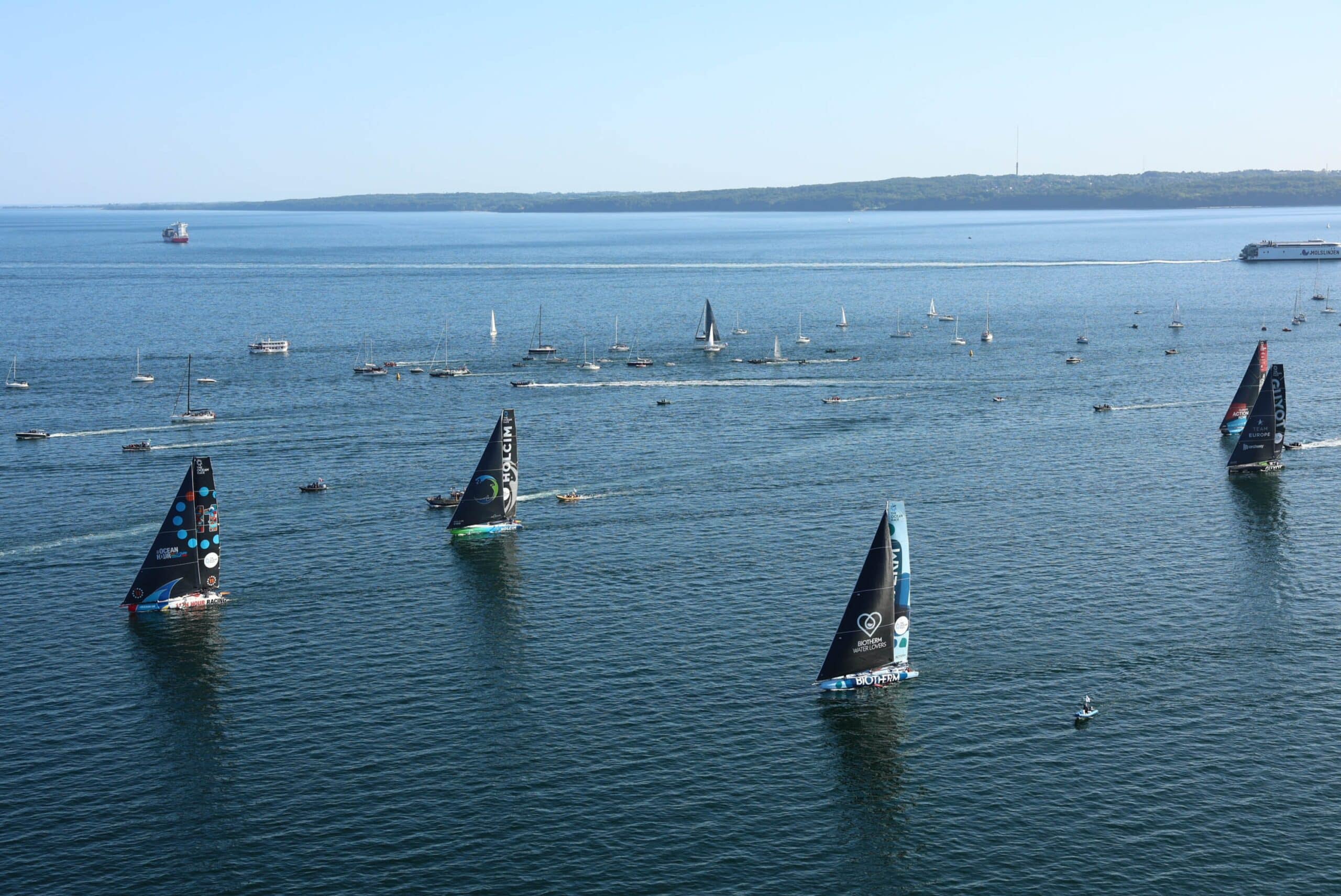11TH HOUR RACING TEAM SETS OFF ON PENULTIMATE LEG OF THE OCEAN RACE 2022-23
11th Hour Racing Team has set off on the penultimate leg of The Ocean Race 2022-23, bound for The Hague, The Netherlands. Leg 6 of seven in this round-the-world race, is a challenging and complex coastal passage to the Dutch city via a no-stop ‘fly-by’ past the German port of Kiel. The 800 nautical mile (921 mile, 1,482 kilometer) sprint will see the five competing IMOCAs race for three days and are anticipated to arrive on June 11.
The 11th Hour Racing Team crew is led by Skipper Charlie Enright (USA), with Simon Fisher (GBR) as Navigator, Franck Cammas (FRA) and Francesca Clapcich (ITA) as Trimmers, and Pierre Bouras (FRA) as the Media Crew Member.
“I’m expecting an 800-mile In-Port Race!” commented Enright. “It’s totally different from any of the other legs we have sailed so far in this race; this will be the most compact and the most intense. It will be a three-day sprint with a lot of complicated weather, twists and turns, and everything on the line. All five boats are going to be going through the same shifts at the same time, experiencing the same currents, and racing around the same headlands – so you’ll see us pushing, for sure.”
Simon Fisher, as navigator, is responsible for interpreting the weather data sent by satellite to each of the boats while racing. “I’m not anticipating much sleep this leg – I’m going to have to be smart about grabbing rest when we are sailing in a straight line, but that might only be as far as 20 miles. If we are going 20 knots, that’s only one hour of rest I’ll get! It is going to be a very busy leg navigation-wise, and I will have to make sure I am as fresh as I can be when the decisions need to be made.
“Throughout this leg, there are multiple navigational hazards we are going to have to work our way around, from bridges to exclusion zones, Traffic Separation Schemes (TSS), and also potential currents against us. We are also expecting there to be thousands of spectators out to welcome the fleet into Kiel – which will look great for them, but provide additional hazards for us,” added Fisher.
As an Olympic sailor and short course expert, Francesca Clapcich, is more used to this style of inshore racing, “My focus for the next three days is going to be firmly on the performance of the boat. Si Fi [Simon Fisher] will have so much on with navigation and weather routing that whoever is not on that job has to be absolutely focused on pushing the boat as fast as possible. The first 24 hours are going to be full-on.”
With 11th Hour Racing Team leading the overall rankings by just one point and a maximum of five points apiece to grab in the next two legs, these are the two opportunities to put a march on the competition, “Fortunately for me, I don’t really feel the pressure of the result,” commented Clapcich. “The result is just a consequence of performance, so the result will be a consequence of us doing a good job on the water. For me, the numbers are not something that we can control, but we can control how we sail the boat, so that is what I’m going to do – push hard to the very end.”
France’s Sailor of the Decade, Franck Cammas, has joined the team for this sprint to The Hague, “It is going to be a very intense race for the next few days,” said the Frenchman as he walked through the crowds cheering the sailors down to the dock. “The leg is very short, like a Figaro race, but with a full crew, so it is possibly a bit easier! But there will be a lot of sail changes, a lot of manoeuvers, so thankfully, we have four sailors onboard rather than just one! It won’t be finished before the very end, and there are going to be many tactical decisions to make, and we will have to stay focused on the speed of the boat 24/7.”
The five IMOCAs set off on Leg 6 in just two knots of breeze on a two-lap inshore section, but on the first downwind leg, the wind eventually disappeared, requiring the Race Committee to shorten the course and cancel the second lap. Despite this, 11th Hour Racing Team led from the start and were the first team through the leaving gate, destination Kiel.
Although it is the shortest passage of the around-the-world race, Leg 6 is far from straightforward and will prove to be as challenging as any of the other far longer legs. Particularly tricky will be the fact that much of the leg will be sailed close to shore, where understanding the patterns of local weather systems and currents could make the difference between success and failure.
With the fleet sailing right into Kiel’s harbor to round a turning mark, a compression is likely. From there, the five IMOCAs and five VO65s, which have returned to the race for the final two legs, will head north, passing Aarhus once again before entering the North Sea at Skagen – Denmark’s most northerly town.
Depending on the weather systems in play at the time, the crews may have to choose between heading offshore for stronger, steadier winds, or taking a more direct route closer to the shore. The North Sea is notoriously shallow and, in the event of strong winds, can kick up a horrible sea state that will – as well as make for an unpleasant onboard experience – require the crews to be on guard against damage to their boats.
The IMOCA fleet is due to arrive in Kiel on Friday, June 9, at around 1530 CEST (1330 UTC), and is expected at the finish in The Hague on Sunday, June 11.




